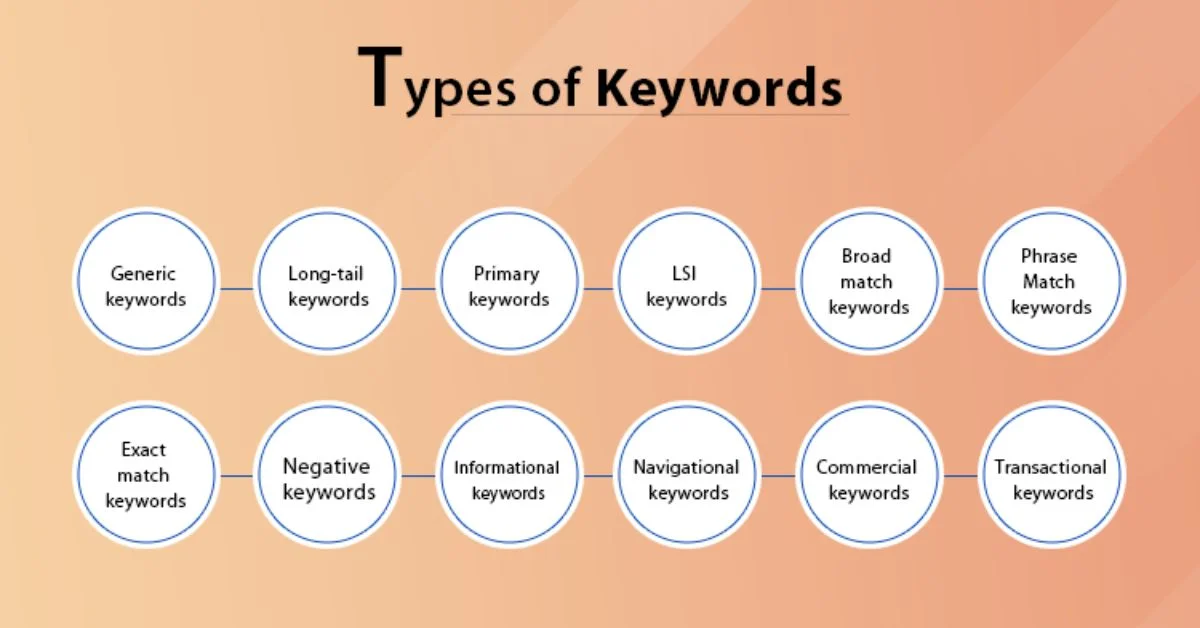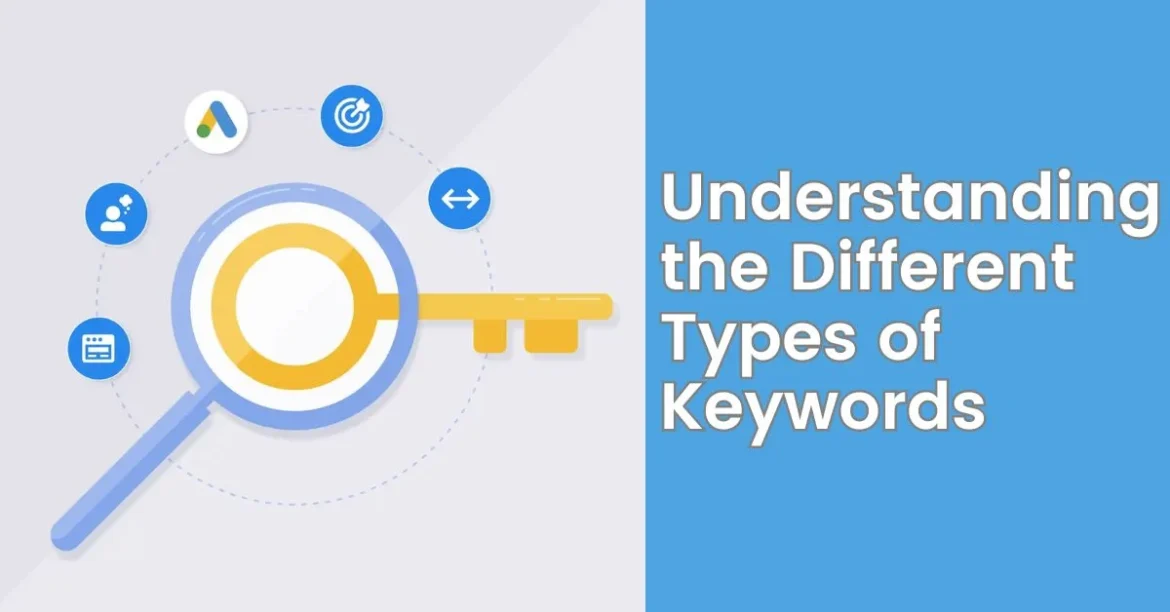In the realm of Search Engine Optimization (SEO), keywords are the cornerstone of any effective strategy. They act as the bridge connecting user queries to relevant content, playing a crucial role in driving organic traffic to websites. However, not all keywords are created equal. Understanding the different types of keywords and how to use them is essential for crafting a successful SEO strategy.
This post delves into the various categories of keywords, their characteristics, and their strategic applications in SEO.

1. Short-tail Keywords
Short-tail keywords, also known as head keywords, are broad, general search terms that consist of one or two words. These keywords have a high search volume, indicating that they are frequently used in search queries. However, this also means they have high competition and may not always lead to the most targeted traffic.
For example, “shoes” or “digital marketing” are short-tail keywords that attract a wide range of search intents.
2. Long-tail Keywords
Long-tail keywords are more specific phrases that usually contain three or more words. They have lower search volumes compared to short-tail keywords but are much more targeted. Long-tail keywords often capture users further down the sales funnel, who are closer to making a purchase or conversion. For instance, “women’s black running shoes size 8” is a long-tail keyword that targets a specific search intent.
3. Primary Keywords
Primary keywords are the main terms that best describe the topic or content of a page. These are the keywords for which you primarily want your page to rank. They are typically incorporated into critical areas such as the title tag, meta description, headers, and throughout the content. Choosing the right primary keyword is crucial for optimizing a page’s SEO potential.
4. Secondary Keywords
Secondary keywords are related to the primary keyword but are variations or related terms that users might also use to search for similar content. Incorporating secondary keywords helps to capture a broader range of search queries and can enhance the page’s relevance and visibility. They should be naturally integrated into the content, complementing the primary keyword.
5. LSI Keywords (Latent Semantic Indexing)
LSI keywords are terms and phrases related to the main topic that help search engines understand the content’s context and relevance. They are not synonyms but are semantically related, providing search engines with more clues about the content’s focus. Using LSI keywords can improve a page’s SEO by making it more likely to rank for relevant searches.
6. Geo-targeted Keywords
Geo-targeted keywords include specific geographic locations, making them essential for local SEO. These keywords are crucial for businesses that want to attract customers from a particular area or region. Incorporating city names, neighborhoods, or even zip codes can help pages rank for local searches. For example, “coffee shop downtown Los Angeles” is a geo-targeted keyword.
7. Branded Keywords
Branded keywords contain the brand’s name or specific product names. These keywords are vital for businesses looking to drive traffic to their site from users already familiar with their brand. Branded keywords typically have lower competition and higher conversion rates since the searcher already shows interest in the brand. An example would be “Nike running shoes.”
8. Negative Keywords
Negative keywords are terms for which you specifically do not want your content to rank. They are commonly used in pay-per-click (PPC) advertising campaigns to filter out irrelevant traffic and ensure ads are shown to the right audience. By identifying and excluding negative keywords, advertisers can improve their campaign’s effectiveness and ROI.

Strategic Application of Keywords in SEO
To leverage the full potential of keywords in SEO, it’s essential to conduct thorough keyword research and strategically integrate various types of keywords into your content and marketing campaigns. Here are some best practices:
- Use a mix of keyword types: Incorporate a combination of short-tail and long-tail keywords, along with primary, secondary, and LSI keywords, to capture a broad spectrum of search queries.
- Prioritize user intent: Understand the intent behind different types of keywords and tailor your content to meet those needs. This can significantly improve user engagement and conversion rates.
- Optimize for local search: For businesses targeting local customers, geo-targeted keywords are crucial. Ensure your NAP (Name, Address, Phone Number) information is consistent across all online platforms.
- Monitor and adapt: SEO is an ongoing process. Regularly monitor your keyword performance and adjust your strategy based on what’s working and what’s not.
Conclusion
Keywords are the foundation of SEO, and understanding the different types is crucial for optimizing your online presence. By strategically incorporating a diverse range of keywords into your content and SEO campaigns, you can improve your visibility in search engine results, attract more targeted traffic, and achieve your digital marketing objectives.
Remember, the goal is not just to rank for any keywords but to rank for the right keywords that will drive relevant traffic and conversions to your site.
